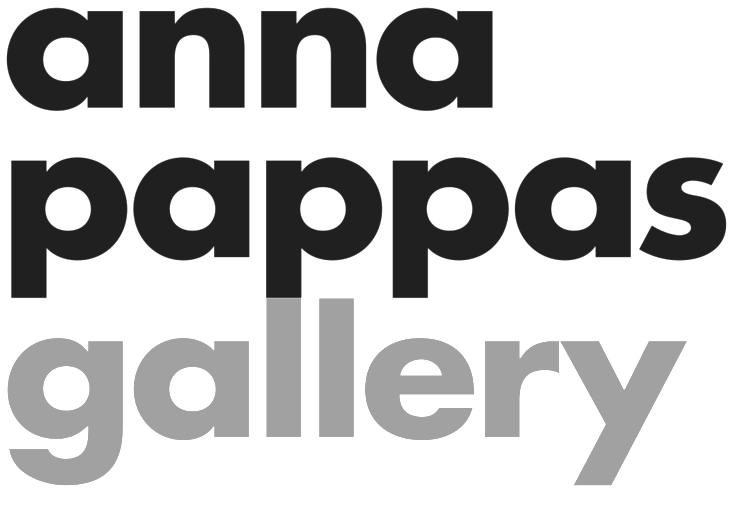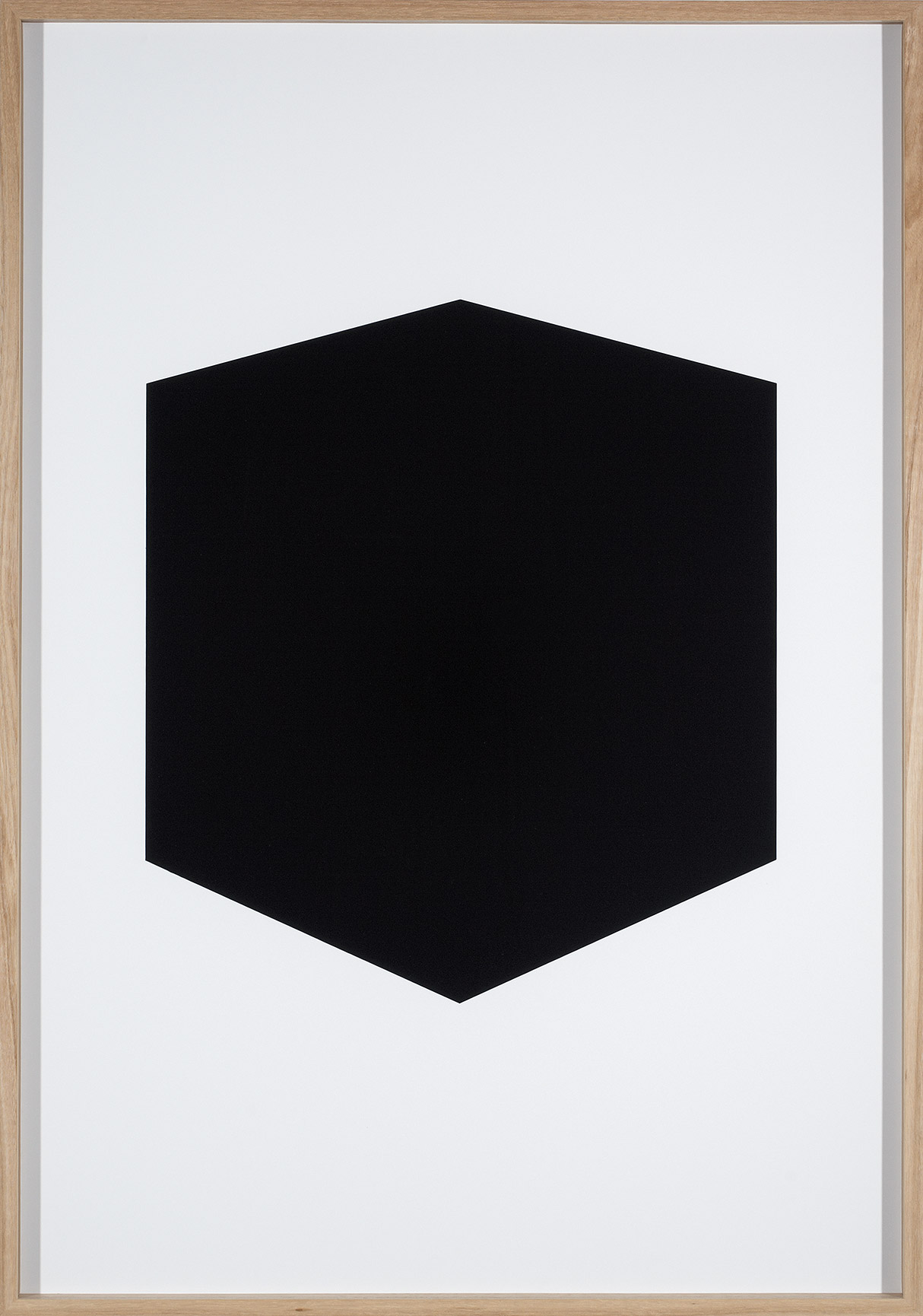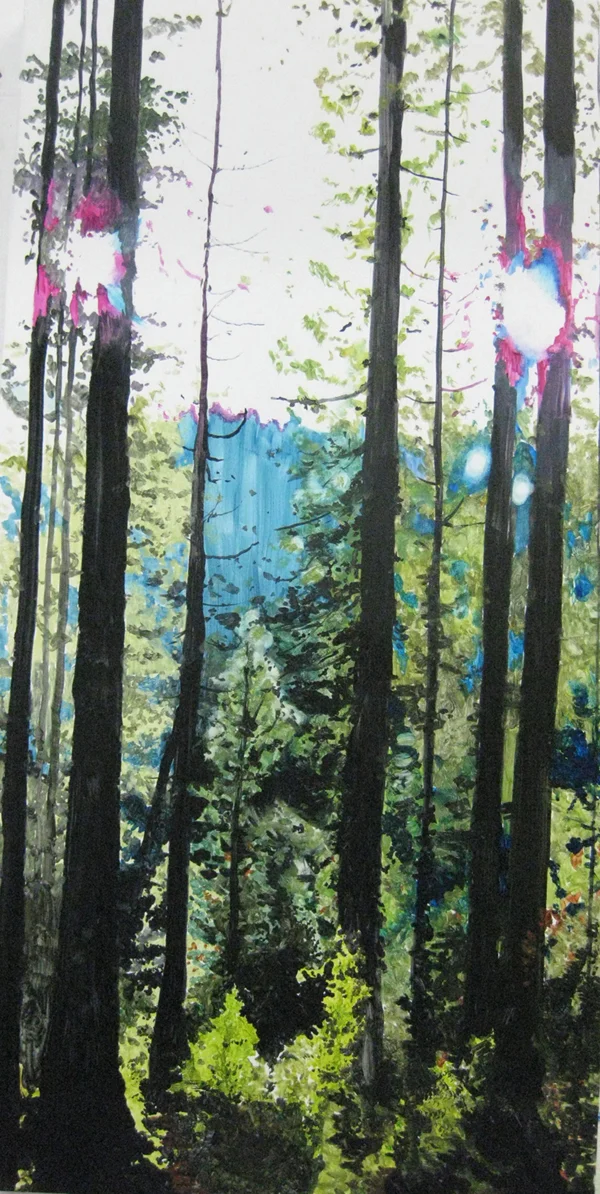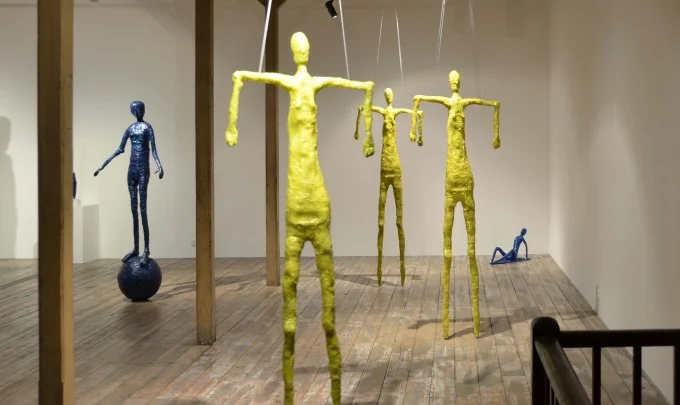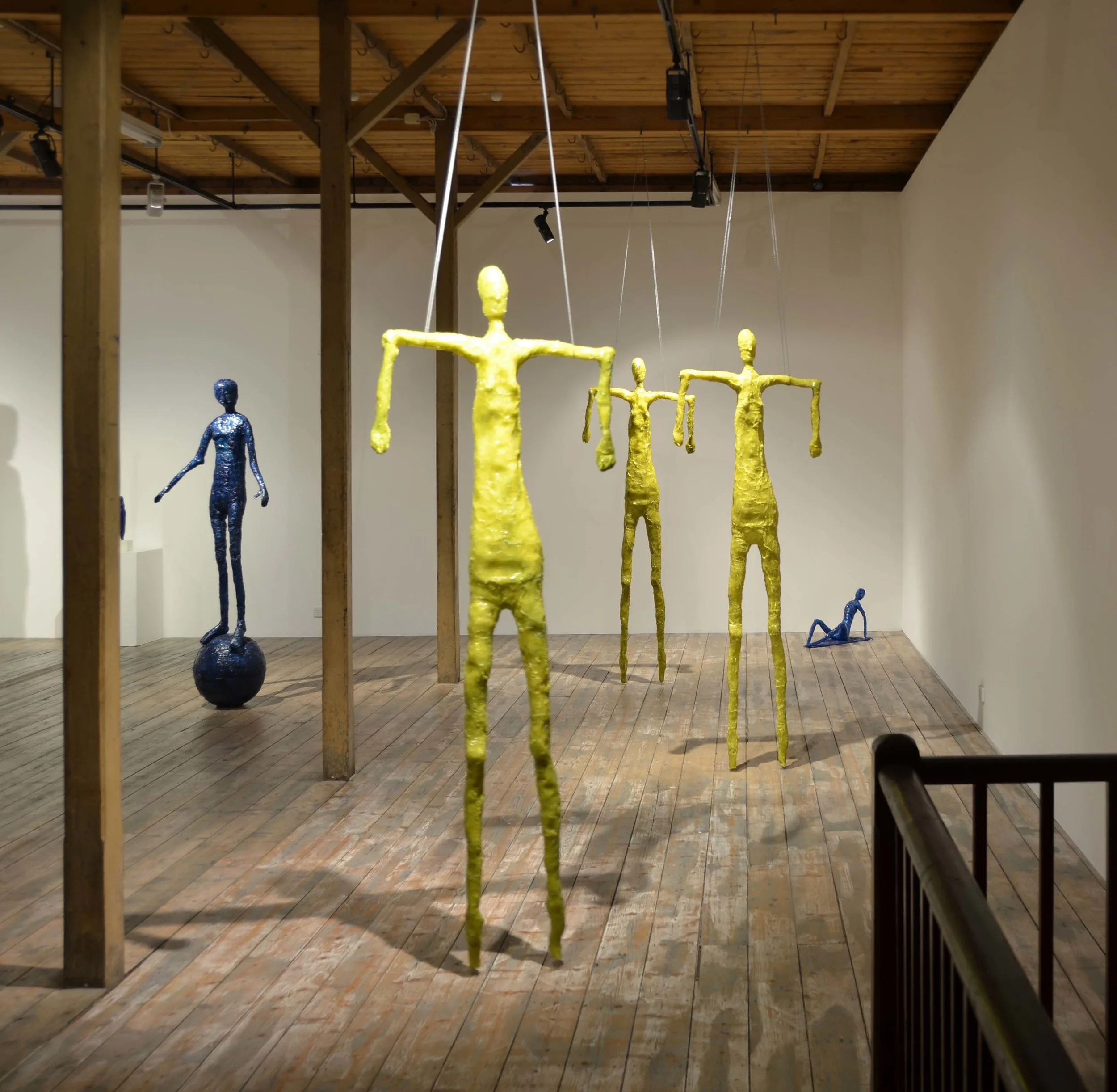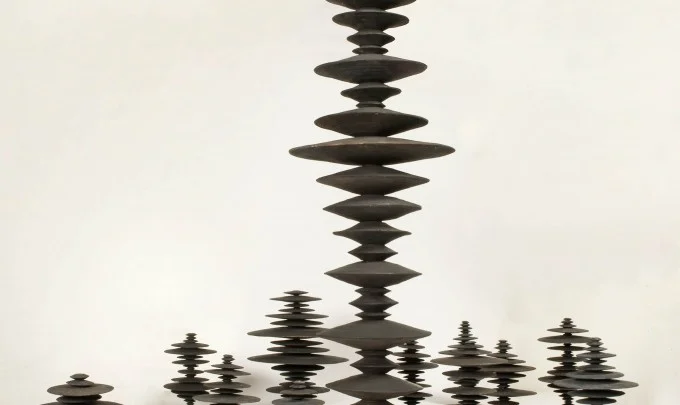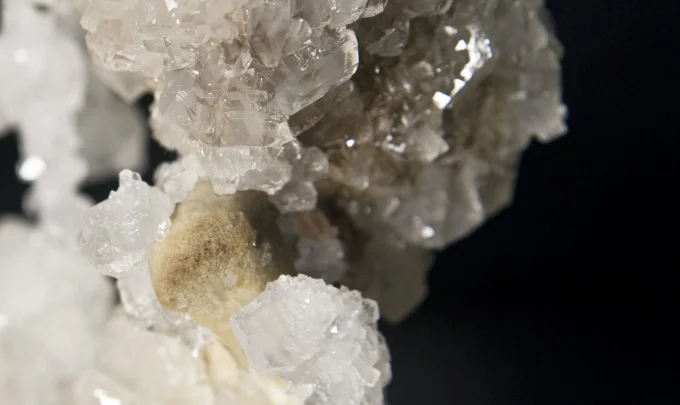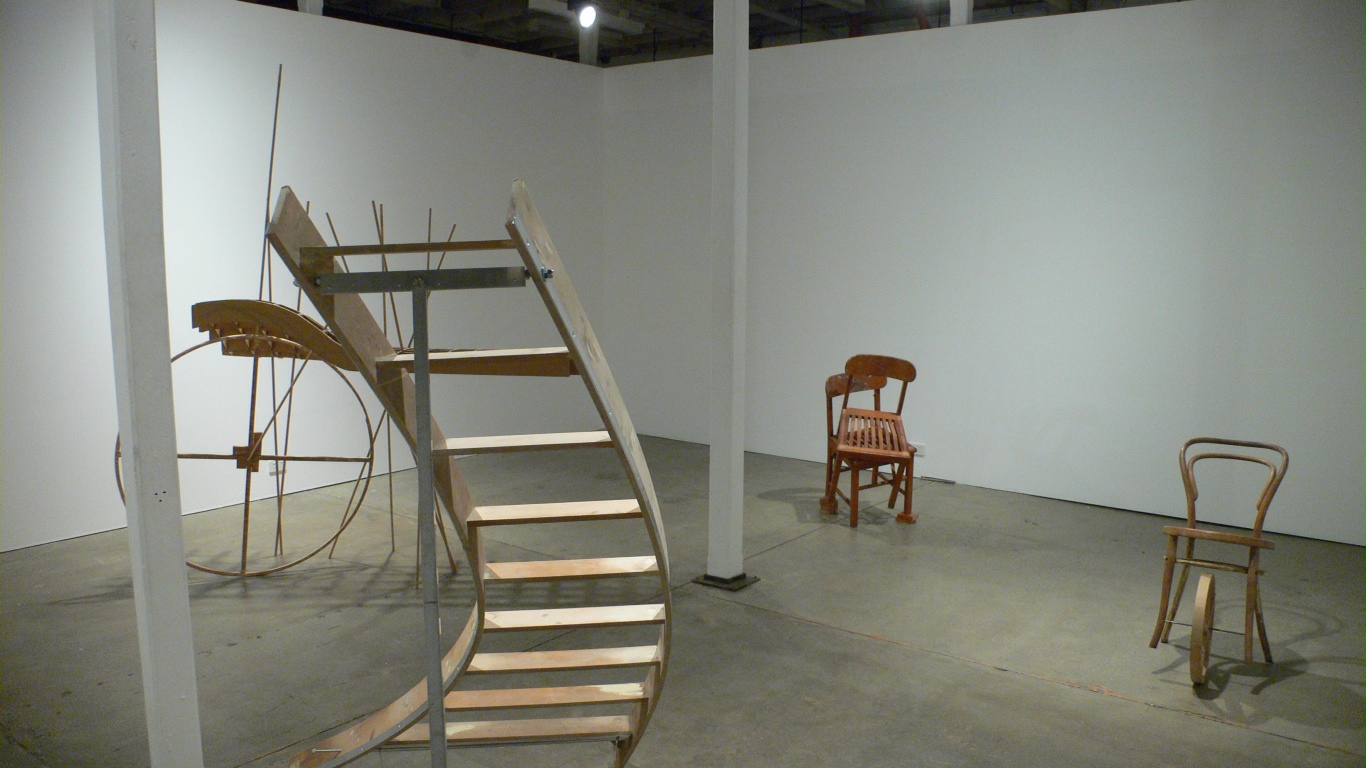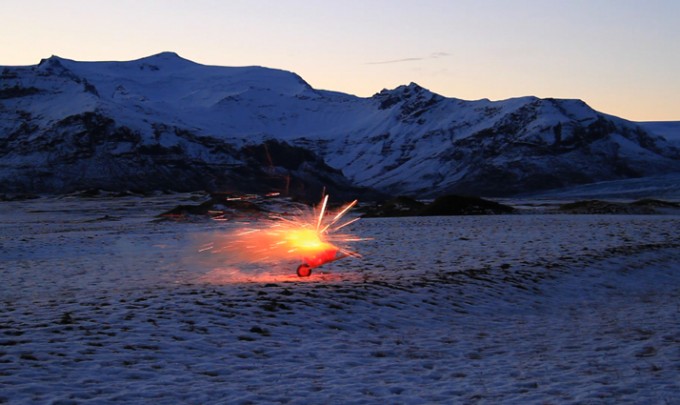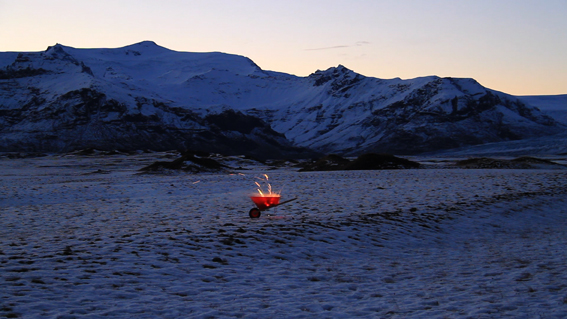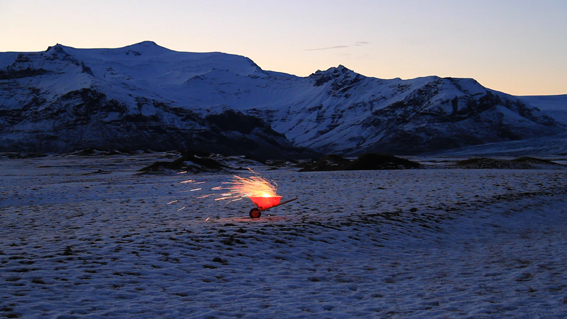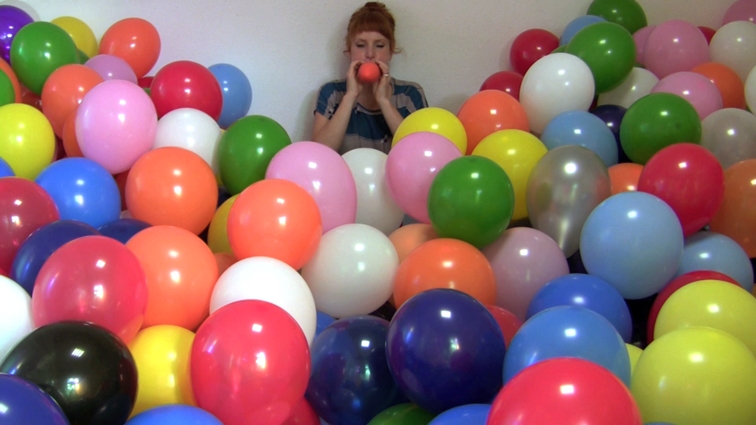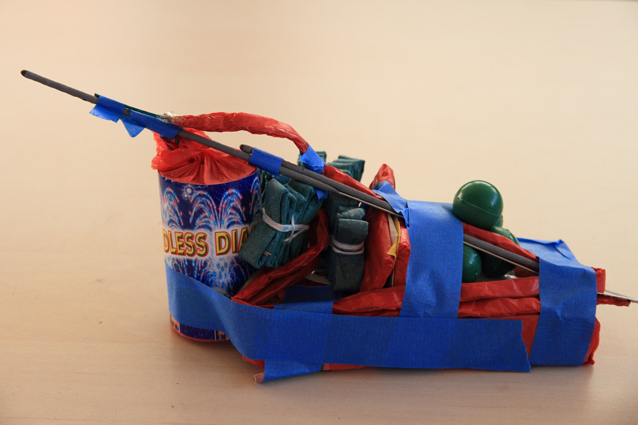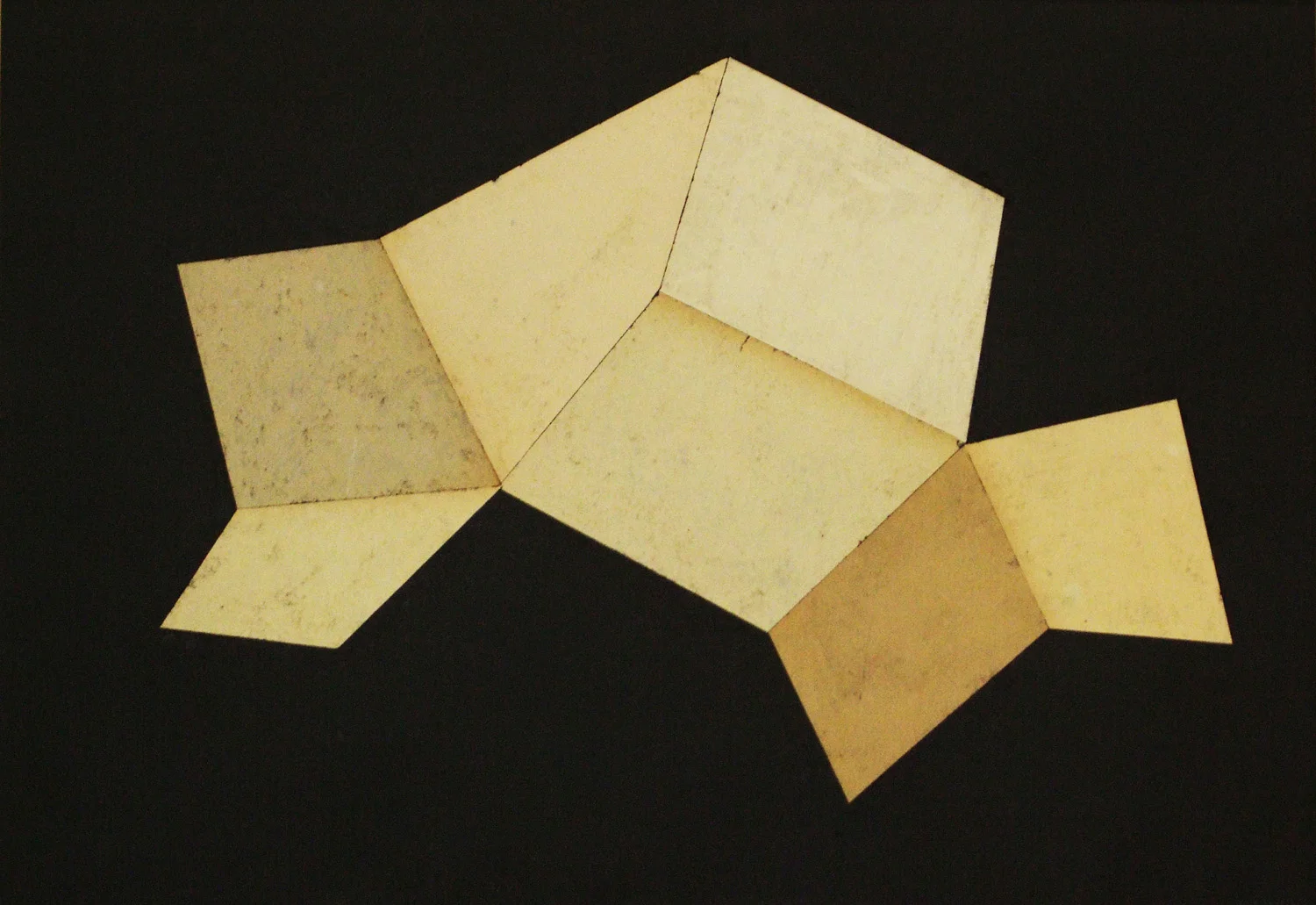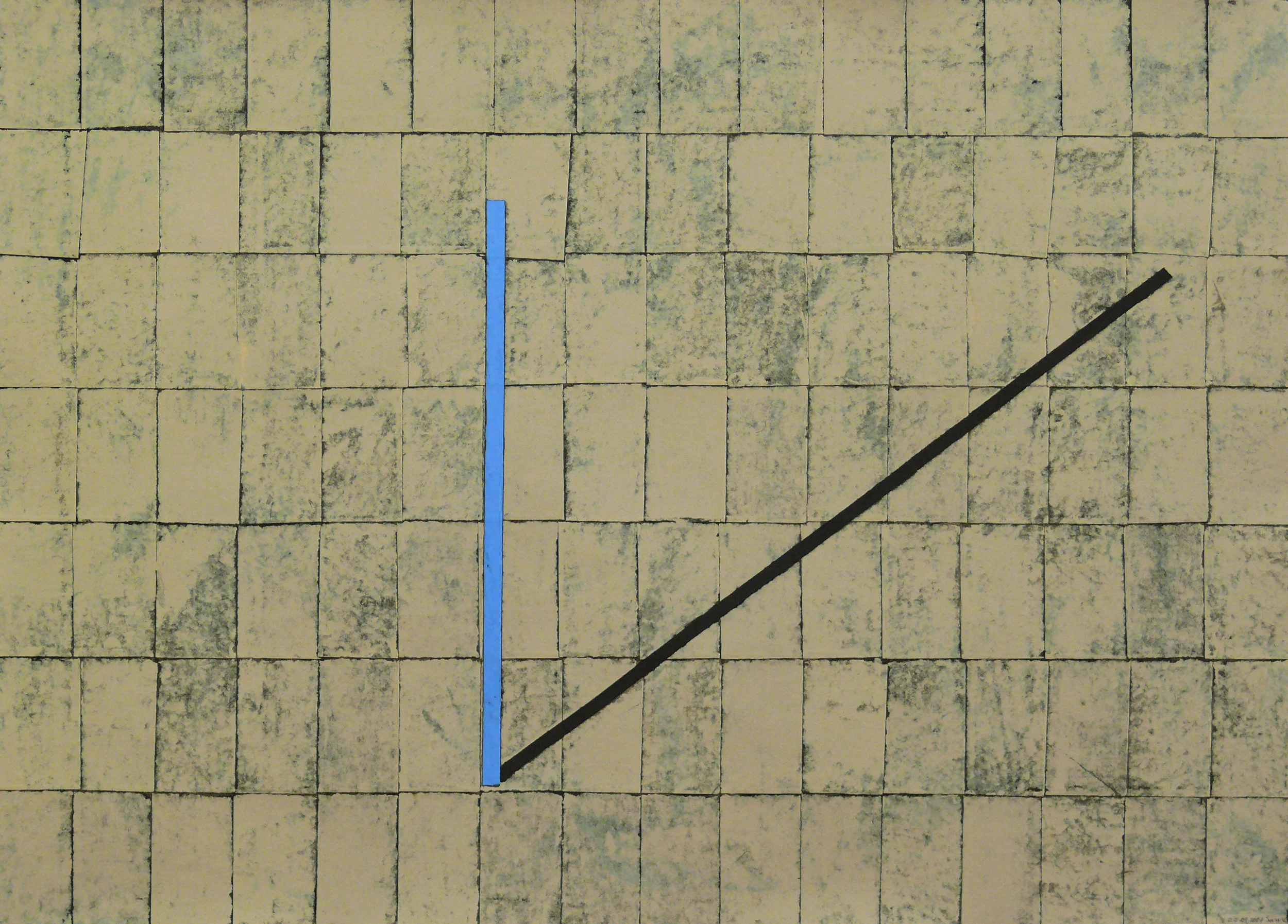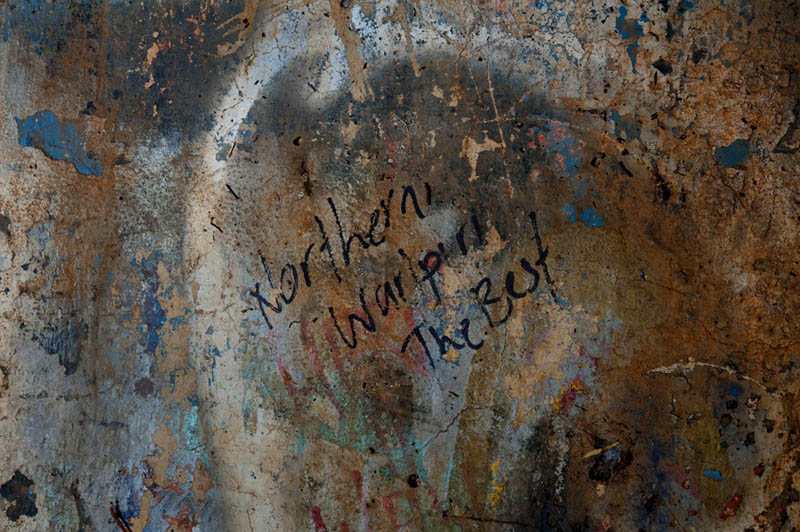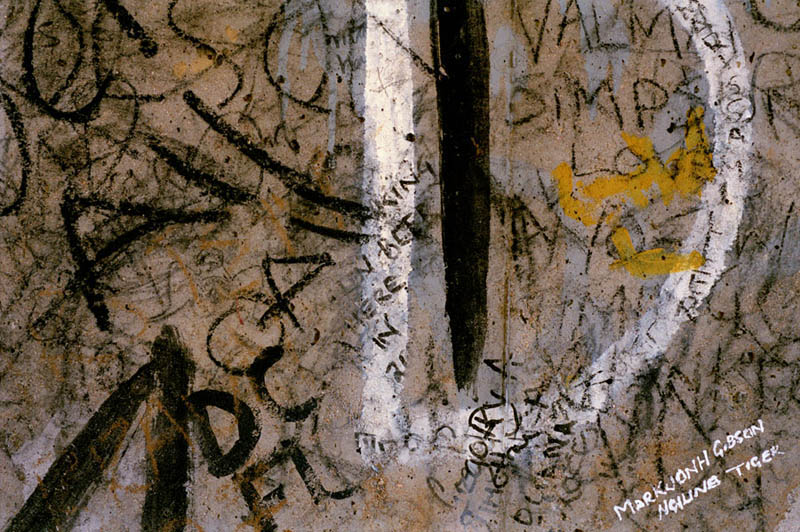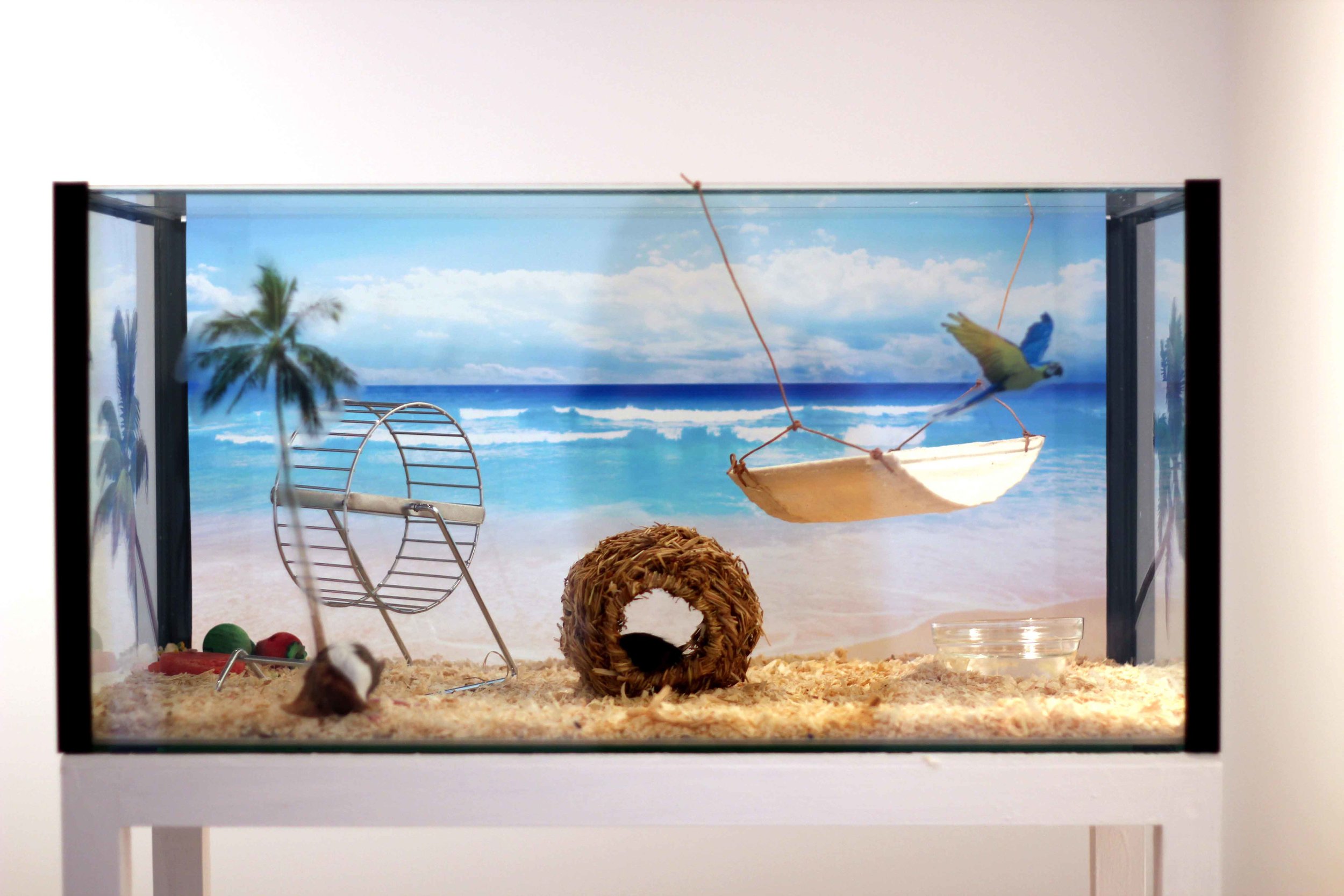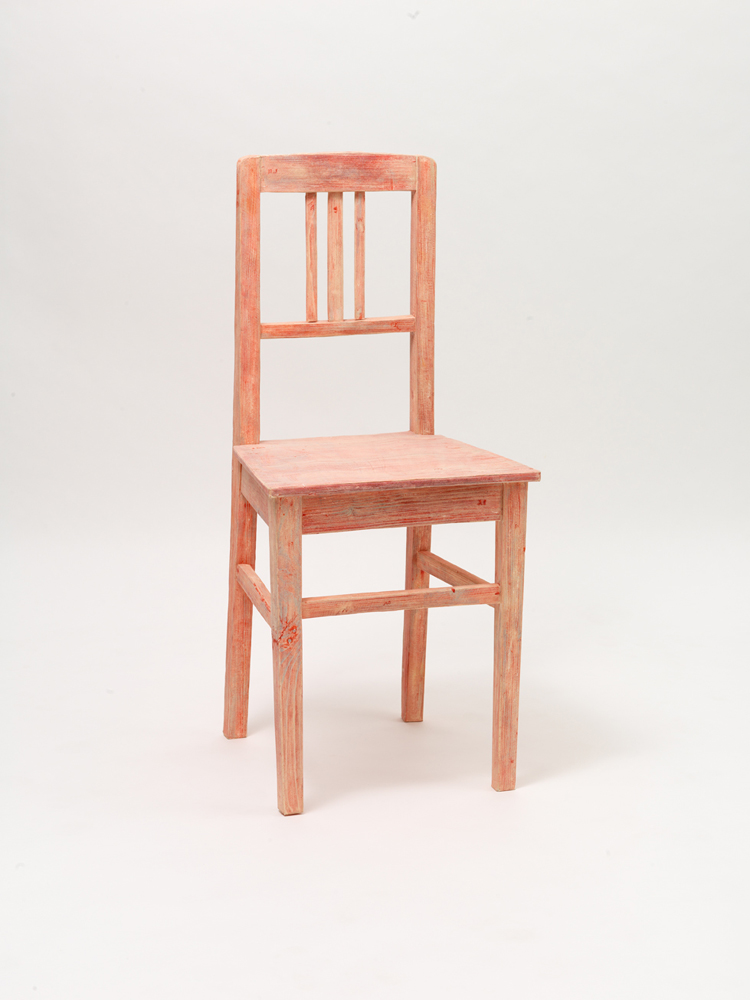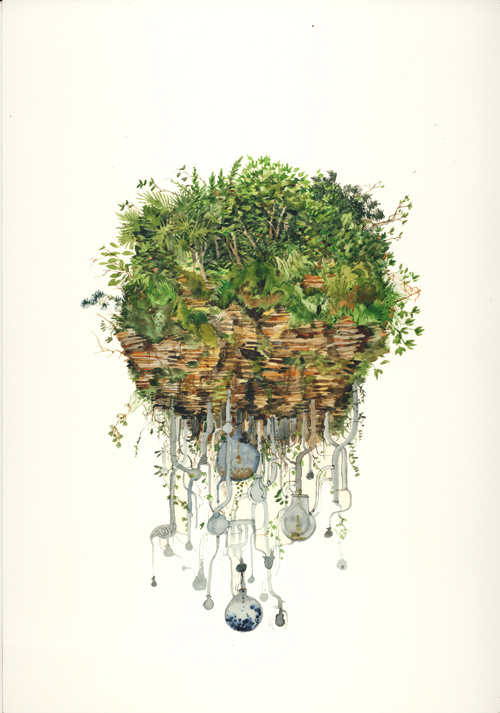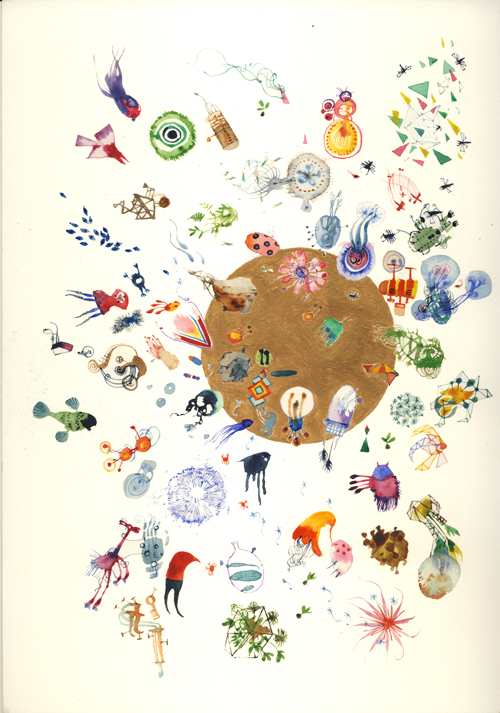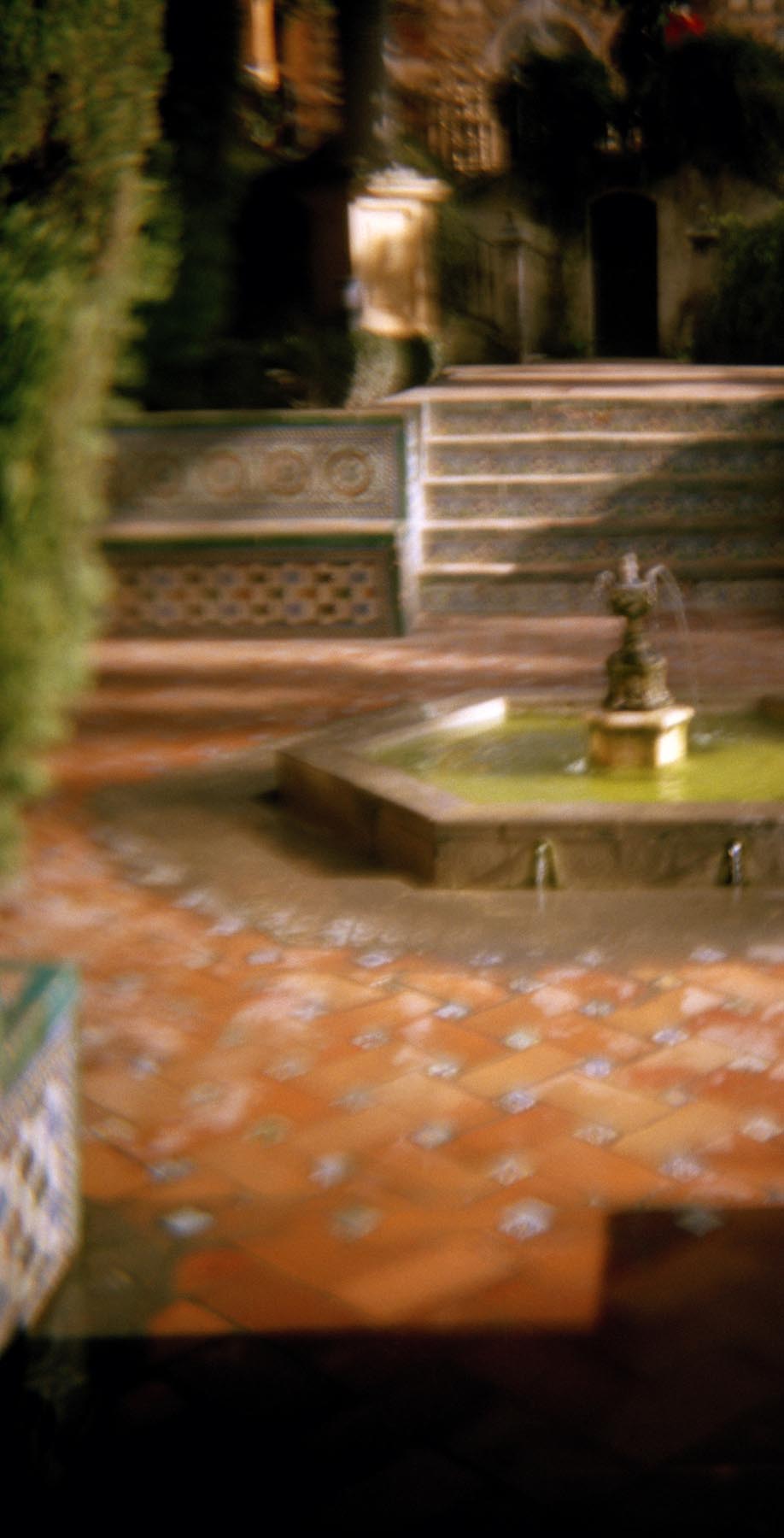
Justin Cooper — Virtual Voyager
Justin Cooper, Voyager 12 - After Age Of Empires III, 2011, painting, mixed media on cedar panel, 120 x 80 cm
Twice finalist in the Doug Moran Portrait Prize, Justin Cooper is a unique emerging artist whose first solo exhibition at Anna Pappas Gallery features a suite of multi-layered drawings with a twist; the artist created each drawing, after playing a different video game for 42 hours straight.
Without sleep, with barely any food, only stopping briefly to urinate in a milk bottle, the artist forced himself into a hyper-intense situation before responding to the individual experience through making an artwork. Tellingly, the drawings are painstakingly detailed, frenetic and techno-coloured, reflecting the particulars of each gaming session but also the artist’s self-induced hallucinatory state. As written by the artist: “The games began to overshadow my thoughts of the real world, mental images and dreams. Playing for such a prolonged amount of time, I found myself thinking about ways different shapes in the real world can fit together to create an imagined world.” Part endurance performance, part science experiment, Virtual Voyager is a conceptually rich and exquisitely executed investigation into the parameters of reality. A game by nature offers pleasure but has proven ironically to have the potential to cause pain, such as seen in the case of the 28 year old South Korean man who died after playing online computer games for 50 hours. In his works we are also reminded that although the dream world presents us with beauty that we may be deprived of in reality, it is still only a product of the mind where darker things also reside.
